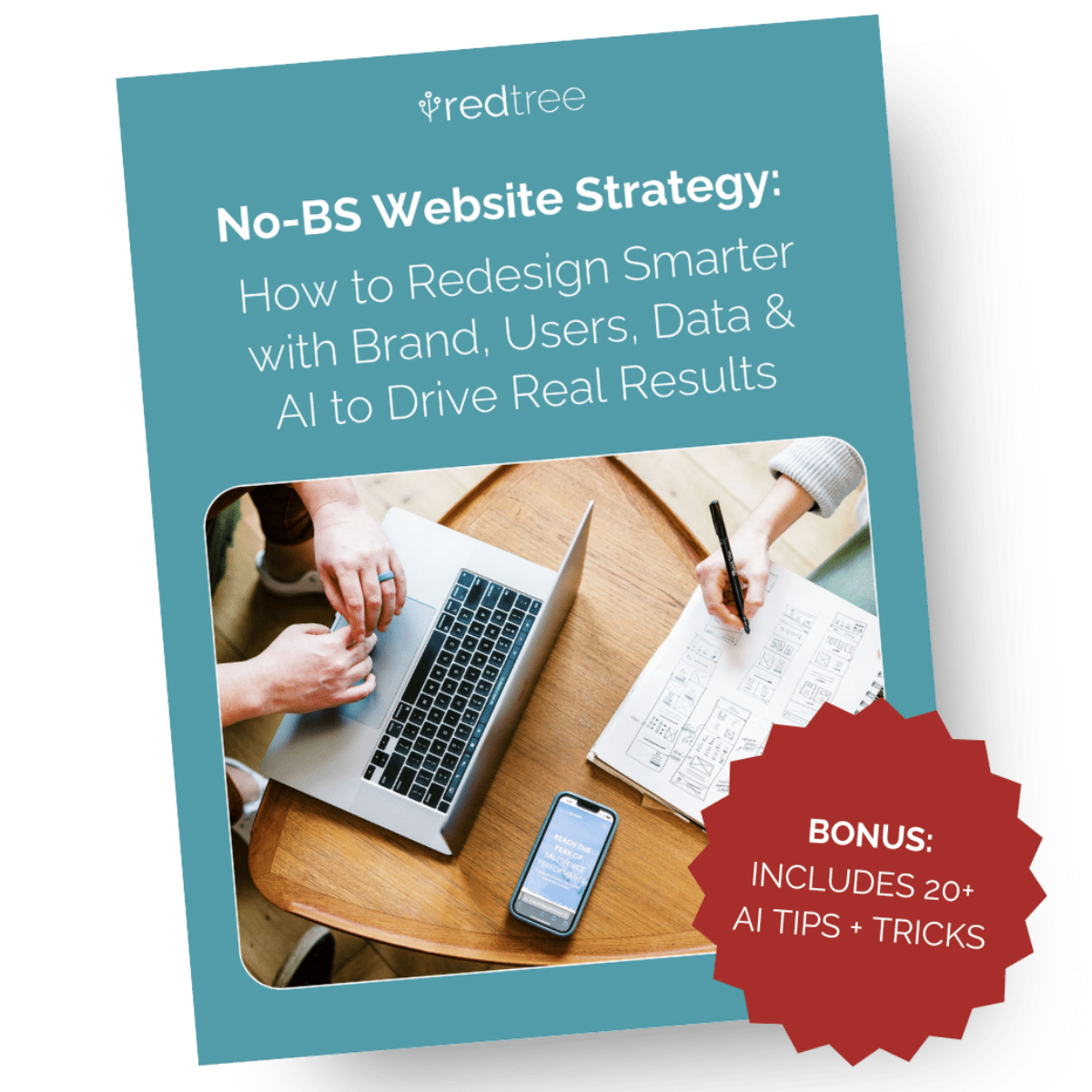AI and SEO in 2025: Where Strategy Meets Search
by RedTree
 AI is rewriting the rules of search — but not the goals. Business leaders still need to attract the right audience, earn trust fast, and convert interest into action. The difference? That journey is now shaped as much by AI assistants as it is by Google.
AI is rewriting the rules of search — but not the goals. Business leaders still need to attract the right audience, earn trust fast, and convert interest into action. The difference? That journey is now shaped as much by AI assistants as it is by Google.
If your content isn’t designed for both, you’re not just missing traffic — you’re missing influence. This guide is built for companies ready to lead in that shift. We’ll break down:
- How AI-powered search reshapes visibility
- What we’re seeing in real time from high-performing sites
- How to create web content that fuels both rankings and reach
- What strategy looks like when you stop writing for algorithms — and start building for the way people really search
The Interface Changed. The Intention Didn’t.
People still search with a goal in mind: to clarify, compare, or commit. But how they search and how those results are delivered has changed.
AI tools like ChatGPT, Gemini, Claude, and Perplexity don’t return blue links. They return full answers, instantly compiled from across the web.
That means visibility doesn’t start on your site — it starts with the content that can be pulled, cited, and summarized by AI.
And yet, users still go deeper. They still click. They still convert. But only when your content earns that second look.
Rethinking your content strategy? Our No-BS Website Optimization Strategy guide breaks down how to align brand, data, and AI to create digital infrastructure that works.
How AI and SEO Work Together (and Why You Still Need Both)
AI tools still rely on published web content. They just shortcut the experience by summarizing the answer.
That means SEO still matters — but not for the same reasons. It's not about ranking first. It's about being the best possible answer to a specific query, presented in a way that both Google and AI tools can understand.
This is what we call Generative Engine Optimization (GEO) — a structured, user-focused approach to content that performs in both AI-driven search and traditional SEO.
When done right, GEO earns you:
- Brand visibility in AI answers (even without the click)
- Higher trust and clarity during early research phases
- Competitive advantage when searchers are evaluating providers
We’re already seeing the returns. Pages optimized for clarity, structure, and utility are being surfaced faster — and cited more — across both engines and assistants.
Performance Insights from the Field
We’ve tracked the impact of AI-assisted search across client sites — using GA to monitor direct traffic surges, AI visibility patterns, and post-summary engagement.
Here’s what’s showing up consistently:
- Pages are getting quoted fast, even within weeks of publishing
- AI-generated summaries reward structure and clarity
- Direct questions outperform clever headlines or brand-heavy intros
- Specialized content beats broad authority every time
- Human oversight still matters — AI-assisted doesn’t mean AI-only
We use AI ourselves — like generating regex patterns for traffic source detection — to support our analytics and automation. It’s not just a content tool. It’s an operations asset.
Want an example? Here’s how we use AI to automate repetitive work.
Tactics That Actually Move the Needle
If your goal is visibility and conversion, here’s what your content needs to do:
Anticipate the Query
Don’t write for keywords — write for questions.
What’s the first thing your buyer asks AI when they’re trying to understand your space? That’s where your content starts.
Make Structure the Strategy
Use short paragraphs, logical headings, and clear hierarchy.
AI tools scan. They don’t scroll. Content that’s hard to extract will be skipped.
Measure the Right Visibility
Not every win shows up in your referral traffic.
We monitor brand mentions, AI-generated citations, and zero-click patterns to understand how our clients are actually being surfaced.
Outrank Without Ranking
Run citation audits. If a competitor is getting quoted where you should be, that’s your next page. Be clearer. Be faster. Be the better answer.
Build Authority Around One Core Topic
Dominate a niche. Don’t dabble in many.
Topical depth signals relevance to AI tools and to search engines. If you want to win, own a problem space.
Use Schema and Semantic Cues
Structured data still matters. Use it to guide machines, not just humans.
Design for the Funnel, Not Just the SERP
Every page should help the user make a better decision. If it’s not aligned with their next step — they’ll bounce, or worse, forget.
Many companies miss this by splitting SEO from UX. Don’t be one of them.
AI and SEO Are Filtering Out the Fluff
Here’s what we know: content that’s vague, bloated, or unclear doesn’t get cited — by people or AI.
But content that’s useful, structured, and aligned to buyer behavior? It gets found. It gets quoted. And it gets acted on.
That’s the future of search and the websites that will lead in it.
Ready to Make It Work?
Audit your content. Track your citations. Make sure every page earns its place — not just by ranking, but by serving.
Because in 2025, clarity is the strategy.
And the best answer wins.